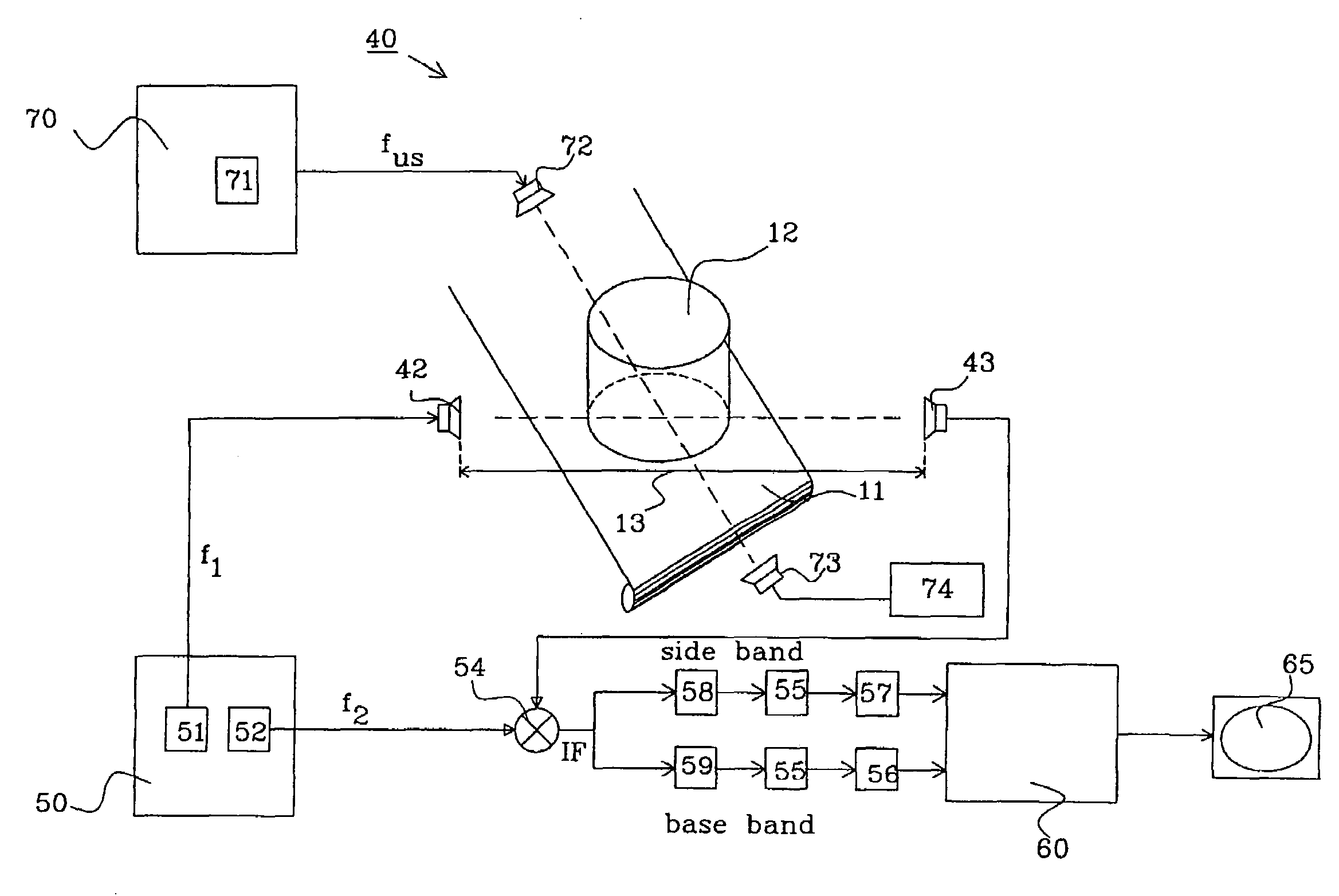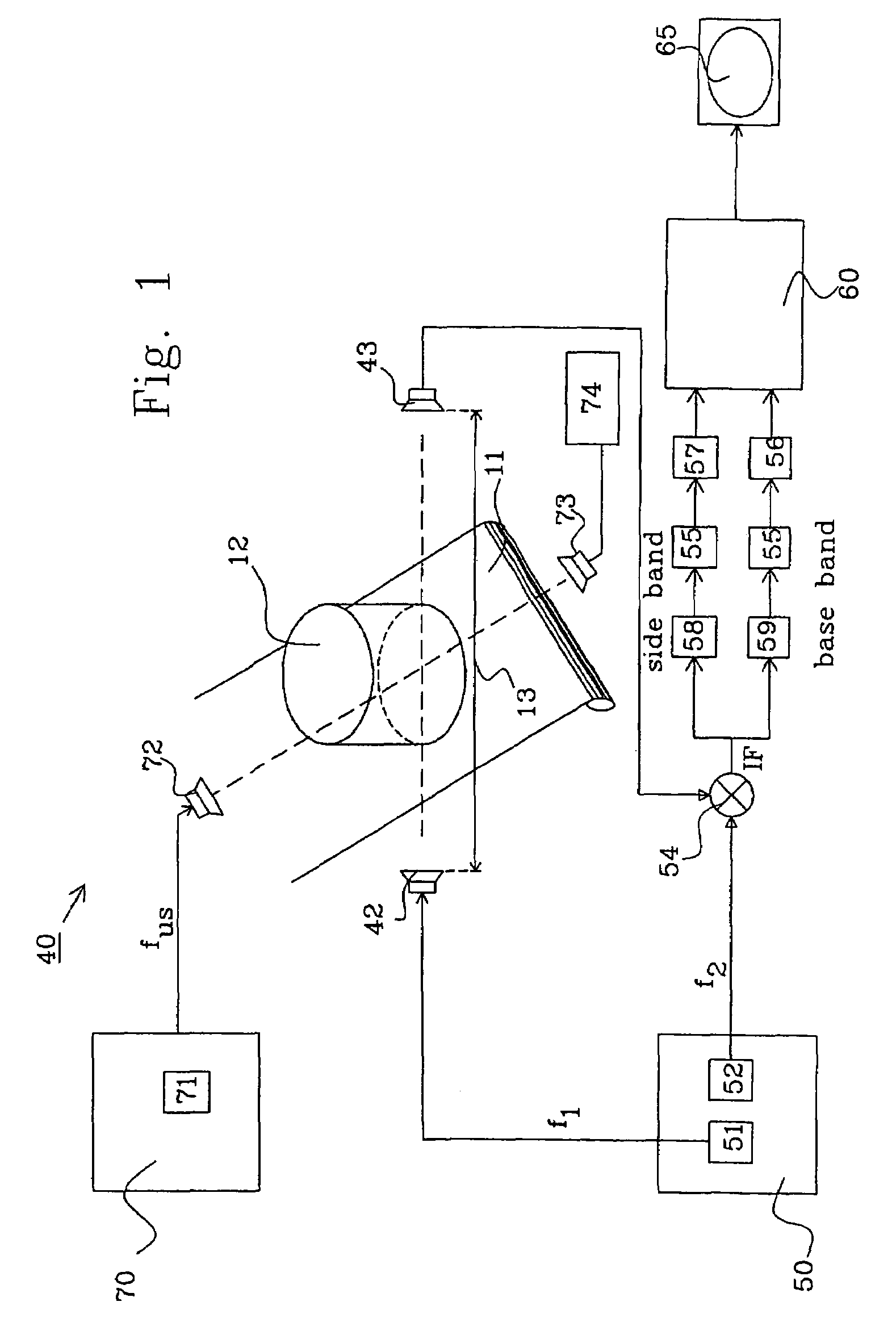Method and system for determining process parameters
a technology of process parameters and methods, applied in the direction of instruments, heat measurement, electric/magnetic/electromagnetic heating, etc., can solve the problem of unsatisfactory temperature distribution of products
- Summary
- Abstract
- Description
- Claims
- Application Information
AI Technical Summary
Benefits of technology
Problems solved by technology
Method used
Image
Examples
first embodiment
[0104]FIG. 5a shows a first embodiment for determining the dielectric function in an object, such as a food product, to determine a physical property in the object, such as internal temperature without physically probing the object, during preparation of the object.
[0105]The flow starts in step 110, where a point in the object is selected. It is advantageous to select a point that has been used during the process of obtaining the ultrasound metric. The selected point corresponds to point 3 in equations 1-17.
[0106]The ultrasound radiation is thereafter focused on this point in step 111 and in step 112, the S-parameters S31 and S23 are measured, as described in more detail in connection with FIG. 6.
[0107]In step 113, a decision is made whether another point should be selected or not. If another point should be selected the flow is fed back to step 110, where a new point is selected before steps 111 and 112 are repeated. If not, the flow continues to step 114 where the matrix with the ...
second embodiment
[0109]FIG. 5b shows a second embodiment for determining the dielectric function in an object, such as a food product, to determine a physical property between two locations in the object, such as material properties, e.g. the presence of a brain tumour, without physically probing the object.
[0110]The flow starts in step 210, where a pair of points in the object is selected. It is advantageous to select points that have been used during the process of obtaining the ultrasound metric. The selected points correspond to point 3 and 4 in equations 1-17.
[0111]The ultrasound radiation is thereafter focused on both points in step 211 and in step 212, the S-parameters S31, S23, S41, S24, S4′1, S24′, S3′1and S23′ are measured, as described in more detail in connection with FIG. 7.
[0112]The S-parameter S43, i.e. the damping between the selected points, is calculated in step 213. Point 3 acts as a virtual transmitter and point 4 functions as a virtual receiver in this embodiment.
[0113]The mean ...
PUM
| Property | Measurement | Unit |
|---|---|---|
| fixed microwave frequency f2 | aaaaa | aaaaa |
| fixed microwave frequency f2 | aaaaa | aaaaa |
| ultrasound frequency | aaaaa | aaaaa |
Abstract
Description
Claims
Application Information
 Login to View More
Login to View More - R&D
- Intellectual Property
- Life Sciences
- Materials
- Tech Scout
- Unparalleled Data Quality
- Higher Quality Content
- 60% Fewer Hallucinations
Browse by: Latest US Patents, China's latest patents, Technical Efficacy Thesaurus, Application Domain, Technology Topic, Popular Technical Reports.
© 2025 PatSnap. All rights reserved.Legal|Privacy policy|Modern Slavery Act Transparency Statement|Sitemap|About US| Contact US: help@patsnap.com



